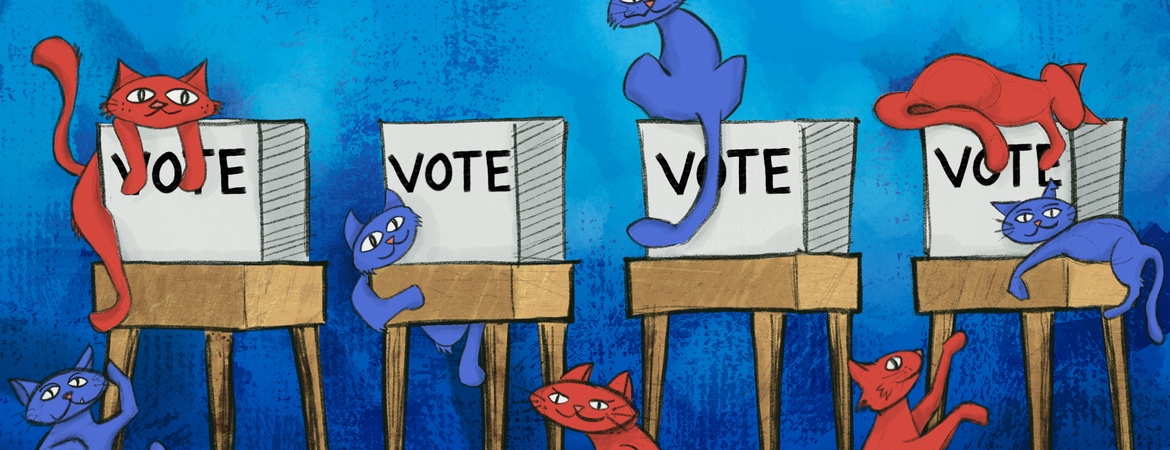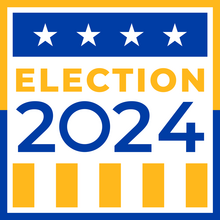
Voters across the United States are witnessing a historic presidential campaign as Democratic nominee Vice President Kamala Harris and Republican former President Donald Trump take the national stage.
The presidential nominees are scheduled to debate each other for the first time on Tuesday, Sept. 10, 6 p.m. Pacific time. The debate will be hosted by ABC News at the National Constitution Center in Philadelphia.
Harris aspires to become the first female president. That, combined with the Supreme Court’s historic overturning of Roe v. Wade, has led gender and reproductive rights to be a focus of the presidential campaign. The issue was heightened when a 2021 interview by Republican vice-presidential nominee Sen. JD Vance resurfaced. In the interview, Vance said the United States government should invest greater time and resources in people with children because “those are the people who ultimately have a more direct stake in the future of this country.” He stated further, “the U.S. is run by a bunch of childless cat ladies who are miserable at their own lives and the choices that they've made… you look at Kamala Harris, Pete Buttigieg, AOC — the entire future of the Democrats is controlled by people without children.”
We asked three UC Riverside experts to weigh in on campaign issues of gender, based on their academic research: Kim Y. Dionne, associate professor of political science; Jade Sasser, associate professor of gender and sexuality studies; and Katja M. Guenther, professor of gender and sexuality studies.
Kim Y. Dionne, editor-in-chief of the website Good Authority
Q: How can VP Harris contrast herself against Trump? What strengths do you see in Harris that can mobilize the country?
A: I’m not sure Harris needs to do much work in differentiating herself from Trump — they are very distinct candidates in terms of their personal and professional backgrounds, the way they navigate politics, and perhaps most importantly for voters, in the policies they support. For example, while Trump and his party support further restrictions on women's reproductive rights, Harris has been outspoken in supporting abortion rights and protecting women's reproductive freedoms. Marquette University political scientist Julia Azari attended Harris's campaign launch event in Wisconsin and noted how reproductive rights were a significant theme in Harris’s speech and that resonated with the people at the event. Given high public support for legal abortion (Pew Research Center says 63% of Americans support legal abortion), Harris's consistent messaging on protecting reproductive rights could be powerful in mobilizing a majority of Americans.
Q: What do people need to understand when they hear Harris is a “historic first”?
A: There are already quite a few comparisons of Kamala Harris to other “historic first” presidential candidates — Barack Obama, Hillary Clinton, and Shirley Chisholm. But it’s important to also remember how Harris is distinct. I recommend folks read a recent post published in a blog I edit (Good Authority) that was written by a team of political scientists that specialize in Black Politics. They describe the ways Harris is different, pointing out how she’ll be navigating in uncharted territory during this campaign. I also recommend reading and following the work of Danielle Lemi, who earned her Ph.D. in political science at UCR. She is an expert on the politics of multiracial candidates like Kamala Harris.
Katja M. Guenther, co-editor of the book "When Animals Die: Examining Justifications and Envisioning Justice"
Q: You’ve conducted research on cat caretakers. What has your research revealed?
A: My research examines how and why people in the Los Angeles area build relationships with and care for community cats, or free-roaming outdoor cats who don’t have a clear human guardian, who number in the hundreds of thousands in LA. Probably because community cats are more prevalent in poorer neighborhoods, their human caregivers are mostly lower-income women, and a high proportion of them are women of color and immigrants to the United States who feel a shared sense of struggle with the cats. In contrast to the stereotype of the “crazy cat lady,” who is usually depicted as a single, childfree woman who is mentally unwell and isolated from the human community around her, the women in my research—some of whom care for a dozen cats and some of whom care for hundreds every day—are married and have children at the same rate as women in the U.S. population as a whole, appear to be fully mentally competent, have many active social relationships, and are often cornerstones in their communities. As I analyze in a chapter in my new co-edited collection, When Animals Die: Examining Justifications and Envisioning Justice, they also really value reproductive justice, which for community cats means ensuring the cats have access to sterilization until (or if) humans create livable lives for these animals—that is, safe, secure, stable environments for community cats.
Q: Based on your research, there are deeper societal and historical roots to calling a woman a “cat lady.” Can you elaborate on this?
A: Cats have been associated with women’s power for millennia, as well as with devils and evil spirits. Women who defied community expectations for their behavior have long been ostracized and hunted as witches, and cats, with their independent spirits, noisy and often promiscuous copulation, and eyes that can seem to glow in the dark were connected to evil, so-called black magic, and witches. Across witch hunts at many different time points—Europe in the Middle Ages, Salem, Massachusetts in the 1600s, Lagos, Nigeria today, among others—just being in the company of cats can be used as evidence that a woman is a witch. In spite of their widespread domestication and presence as companion animals, cats are still haunted by their history as animals often involved in moral and religious panics. Globally, witch hunts—which continue to be carried out in a range of countries, including in India, Papua New Guinea, and several countries in western and sub-Saharan Africa, among others—disproportionately target women, and especially those who have in some way violated local community norms, whether those are based in Christian or traditional religious beliefs. Social conditions always shape if and how anti-witch sentiment is expressed. In the substantially secular contemporary United States, we no longer hunt witches, but we do stigmatize their descendants, the “crazy cat lady,” who, like her witchy ancestors, is a woman who defies social conventions by being too independent, too smart, and too connected to cats for a male-dominated society to feel comfortable. A common cultural representation of the “crazy cat lady” as a hoarder also provides us with a wonderful foil that lets us draw on century-old ancient ideas about women and cats while pulling our attention away from the real hoarders in a capitalist system: those who hoard money and other resources, including farmed animals.
Q: What does name-calling say about masculinity and gender dynamics?
A: Trump and Vance echo centuries of incorporating misogyny, racism, xenophobia, and ableism with claims about humans’ superiority over animals, or what is often referred to as speciesim. Trump has described undocumented immigrants as “animals,” Nikki Haley as “birdbrained,” Nancy Pelosi and Omarosa Manigault Newman as dogs and Pelosi also as “crazy as a bed bug,” and of course he routinely refers to his former lover Stormy Daniels as “horseface.” Comparing people to animals who are viewed as “undesirable” or who have “undesirable characteristics” is an effective way to denigrate them, and women and members of marginalized groups are especially targeted with this kind of language in political discourse because, dating back to at least the Enlightenment, they have been constructed as being more animal-like… No doubt Trump and Vance are mobilizing their masculinity against Harris and other powerful women. Harris’ race makes language about her as animal less socially acceptable, so I don’t know if we will hear specifically that kind of language about her from Trump or Vance. But I think we’d be hard pressed to find another U.S. public figure with such a wide audience who is as openly and consistently misogynistic and as committed to maintaining a firm gender boundary in which women are subordinate as Trump—and he often integrates speciesism with misogyny.
Regarding Vance’s 2021 comment, there are so many layers of meaning here—cat ladies are presumed childless, unhappy, and dissatisfied with their life choices. And Vance identifies a gay man, Pete Buttigieg, as a cat lady, a classic example of the homophobic strategy of feminizing gay men. Empirically, there is no evidence to suggest that childfree people are less invested in community affairs or well-being than those with children; to the contrary, reams of scholarship focus on the contributions, large and small, of childfree people to supporting the well-being of other people’s children and to their broader communities.
Jade Sasser, author of “Climate Anxiety and the Kid Question”
Q: For many people, opting to have children is not simply a matter of “wanting” to be a mother/parent. What other factors have you found influence childbearing?
A: A lot goes into whether people have children or not, including financial considerations, physical health, cultural expectations, and professional goals. Increasingly, deep distress about big issues — like social and political polarization, or even the climate crisis — are playing a role in young people’s parenting plans. Ultimately, having the ability to make decisions about whether to have a child or not is an important human right.
Q: Reproductive rights is a hot topic. What do Americans need to understand about population control, women’s rights, and climate change?
A: Americans need to understand how far we’ve come since the days of the “population bomb” ideas of the 1960s: population has not exploded as predicted, and food resources have not been precarious as crisis narratives suggest. At the same time, climate change has become a pressing issue everywhere. Fighting climate change is a key component to helping people feel good about the future, whether they want to bring children into that future or not.




